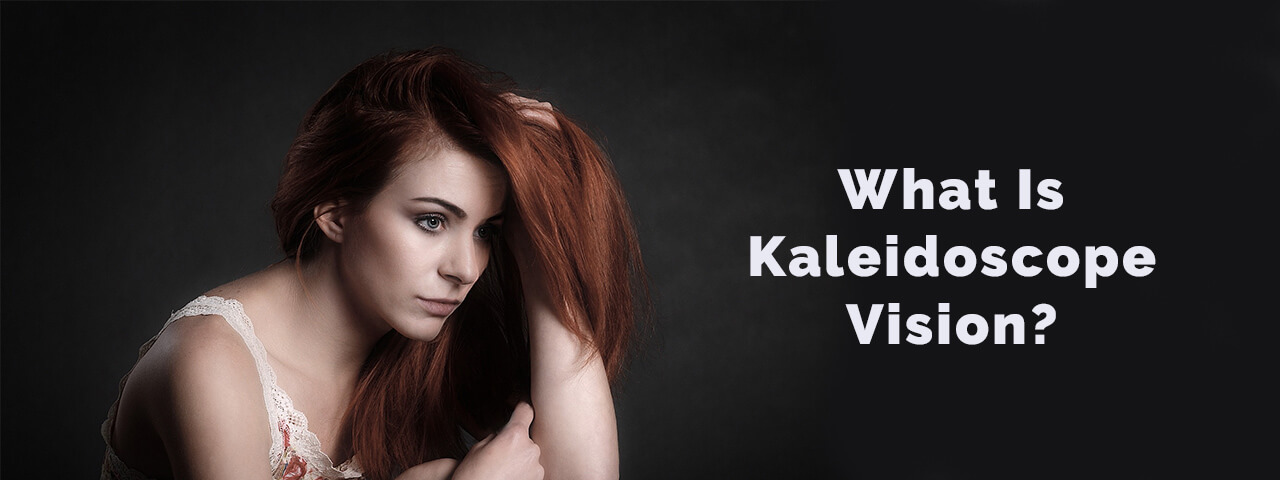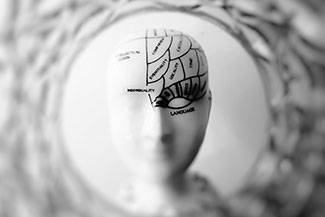
What Is Kaleidoscope Vision?
Kaleidoscope vision is not a stand-alone condition, but rather a visual symptom of migraines or conditions like a stroke or brain injury. A person experiencing kaleidoscope vision may perceive their visual field to be fractured, vividly colored, or scrambled — similar to looking through a kaleidoscope.
Visual symptoms like kaleidoscope vision can affect one or both eyes and can occur with or without a headache. In many cases, visual auras precede headaches and migraines.
Episodes of kaleidoscope vision usually last between 10-30 minutes, but can persist up to an hour.
What Can Cause Kaleidoscope Vision?
The most common cause of kaleidoscope vision is an ocular migraine, which is a migraine accompanied by visual symptoms. About 20% of people who suffer from migraines experience some type of aura, also known as a sensory disturbance. Other forms of auras include tingling in the hands or face, muscle weakness, and difficulty speaking.
Visual Symptoms of a Migraine
Kaleidoscope vision is a component of only one type of visual aura. Understanding the other types of visual disturbances that may accompany a migraine can provide more clarity.
The 3 types of visual auras are:
1- Positive Visual Aura – This is when a person sees something that isn’t actually there. For example, a person experiencing a positive aura may see zig-zag or squiggly lines, flashes, stars, or dots. These perceived shapes may be colorful and move around the visual field or grow larger. A visual hallucination is also considered a positive aura.
2- Negative Visual Aura – This is characterized by any loss of vision during a migraine, whether partial or total. With negative auras, one may experience blind spots, loss of peripheral vision, or a brief period of total vision loss.
3- Altered Visual Aura – This type of aura distorts what you see without adding or subtracting anything. For example, one may perceive a straight line as wavy or blurred. Kaleidoscope vision is considered an altered aura.
Other forms of altered aura include misperceiving the size of an object (seeing it as larger or smaller than it really is), distorted distance perception, and distorted or absence of color.
If you experience any of the above symptoms with a migraine, seek medical attention to rule out more serious conditions, like retinal tearing or stroke.
What Causes an Ocular Migraine?
It is difficult to pinpoint the exact cause of ocular migraines, but research suggests that structural abnormalities of the visual cortex could play a role.
Another possible trigger of ocular migraines is visual dysfunction. There are several types of visual dysfunction that can trigger migraines, but a common one is binocular visual dysfunction (BVD). A binocular vision problem refers to a misalignment of the eyes.
Ordinarily, our brain receives an image from each eye and unifies those images to make one clear picture. This can only occur efficiently when the eyes are properly aligned. With BVD, the eyes and brain struggle to form a clear and unified image, which can cause the eyes to become overworked and strained. This high amount of ocular stress can produce painful physical symptoms, like a migraine with aura.
Reducing the amount of stress your eyes endure can lessen the frequency or intensity of migraines, visual auras, and their debilitating symptoms.
How A Neuro-Optometrist Can Help
If you or a loved one is experiencing ocular migraines, the first step is to schedule a functional visual evaluation. By assessing your vision, we can narrow down the cause of your symptoms and determine if visual problems could be amplifying them.
If a visual problem is detected, Dr. Sophie Jobin will create a custom neuro-optometric rehabilitation program to strengthen your visual system and correct the problem at its source.
Neuro-optometric rehabilitation therapy can improve visual skills like eye movement, eye tracking, and eye teaming. This specialized form of vision therapy trains the eyes and brain to work in unison, increasing the efficiency of the visual system.
We may also recommend certain changes, such as rethinking your workspace, that can relieve some eye strain and stress, which may lessen the number of migraines you experience.
Start your journey to healing and call Eye Health Centre to schedule a functional visual evaluation today.
Our practice serves patients from St. Albert, Edmonton, Spruce Grove, and Fort Saskatchewan, Alberta and surrounding communities.









